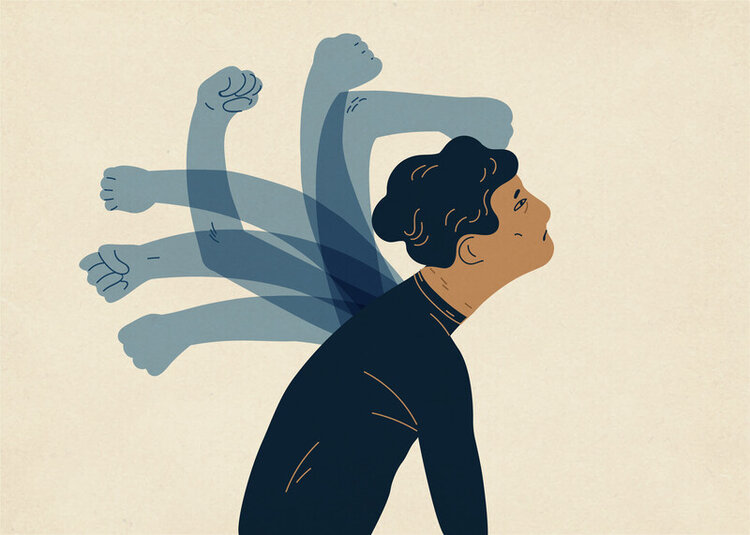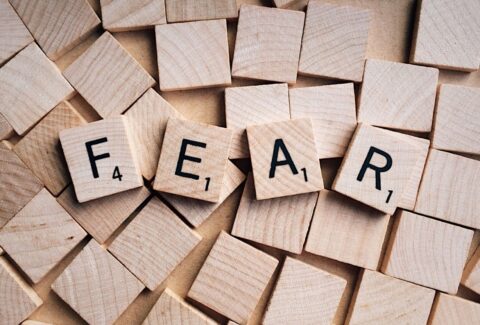An Inside-Out World
Reality and illusory-based thinking.
This article was first published in Psychology Today
Almost all of us navigate the world through a set of controlled hallucinations [1]. While it would be in our best interest to give up these controlled hallucinations, we have all agreed to collectively call them “reality.” Our reluctance to give up our controlled hallucinations makes sense, except that suffering ends up being the consequence.
Regardless of how our thought systems convey and repeat the message, we still seem to miss it. We fail to understand, appreciate, or see that this is an inside-out world [2]. In other words, we continue to navigate the world as if it were happening to us; as if we were victims of it. Understanding that this is an inside-out world entails taking responsibility for our lives, and our circumstances. Yet this is no easy accomplishment, and for many reasons:
- We are socialized to think dualistically [3]: It’s either/or, it’s all or nothing — and there is no grey area. As such, we are socialized to either blame the outside for our own circumstances or blame ourselves for our life situation. Both blaming ourselves and blaming the outside world lead to suffering. And, both are based on an illusory context. If the only two options we think we have are between blaming “others” or “things” and blaming “ourselves,” then taking responsibility for our lives remains elusive.
- We’ve spent our life “believing” in an outside-in world. Beliefs direct our actions, which means we act as if things were coming from the outside into our brain instead of the other way around. Because we try to remain faithful to our belief system, we behave accordingly. It is then hard for us to even consider what life would be like if we stopped pretending that it operates from an outside-in paradigm.
- We are oblivious to the concept of Consciousness. Yes, we experience it all the time and would not be able to experience it without it. We would not be able to enjoy a movie, get fully into it, and still know that it is just a movie. Consciousness allows us to do this. Yet, we still have no idea what the decisive factor is-what Consciousness is. It takes a different level and state of Consciousness to see Reality, to shift to Reality-Based Thinking, and to see Harmony instead of the effects of Illusory-Based Thinking (our collective controlled hallucinations).
It is very easy to mistake Illusory-Based Thinking as meaningful because it is contrasted with Reality. However, its relationship, put in context, will help us fully understand how and why it is meaningless. This, in turn, can be summarized as follows:
- Reality is all there is. Reality is the only Source. And, Reality is the only thing we can see.
- This means in the absence of Reality, there is nothing. In the presence of nothing, our brain makes up something based on our Ordinary or Normal Blueprint. Our mind creates an illusion.
- However, the illusion still has its effects, and we do not passively perceive the world. Instead, we actively generate it.
This third point is crucial. The fact that something meaningless, not real, and which does not exist, can affect us, is a hard pill to swallow. However, we cannot escape it, and the reluctance to give up our illusory based belief is not without consequences. Judgment, attack thoughts, projections, and the resulting suffering stem from meaningless Illusory-Based Thinking, but all have an effect.
Many of us make the shift when it no longer makes sense for us to continue to suffer, and when we experience another way that leads to a different result. This is easier said than done. Once we shift to Reality-Based Thinking, everything shifts. However, due to how deeply rooted our current modus operandum is, making such a shift is not a straightforward process. But there is a way to make it happen:
- Have the desire, decide, be determined, be willing, and be committed, to make the shift.
- Practice giving your brain a new point of reference, a new Blueprint, a new template to draw from.
- Practice regularly, frequently, and intensely until your new point of reference becomes more predominant than your habitual Illusory-Based Thinking
- Use everything you perceive in the world, in others, in yourself, and in situations, as a feedback mechanism, or feedback loop. Use it to determine if you are operating from Reality-Based Thinking or from Illusory-Based Thinking. And commit to making a shift each time it is necessary.
This includes those times when you beat yourself up for not “getting there fast enough.” If this comes up for you, know that you are merely operating from Illusory-Based Thinking, and it is an instantaneous invitation for us to make the shift.
For Reality-Based Thinking will, and can only bring you harmony, peace of mind, and an end to suffering.
If there is any skepticism, it is a sign of which context we are operating from, and the invitation is there for us to put it to the test. Testing it and experimenting with it, allows us to see for ourselves. Then, we become a model to help ourselves, to help our loved ones, patients and clients cease suffering in their lives, so they too can be a model for those around them.
References
[1] “Anil Seth: How Does Your Brain Construct Your Conscious Reality?” NPR, NPR, 5 Oct. 2018.
[2] Keltner, Dacher, and Paul Ekman. “The Science of ‘Inside Out’.” The New York Times, The New York Times, 3 July 2015.
[3] Enviroart, et al. “Dualistic Thinking.” Enviroart by Suzanne Bélair, IAF, AFC, 25 May 2009.









